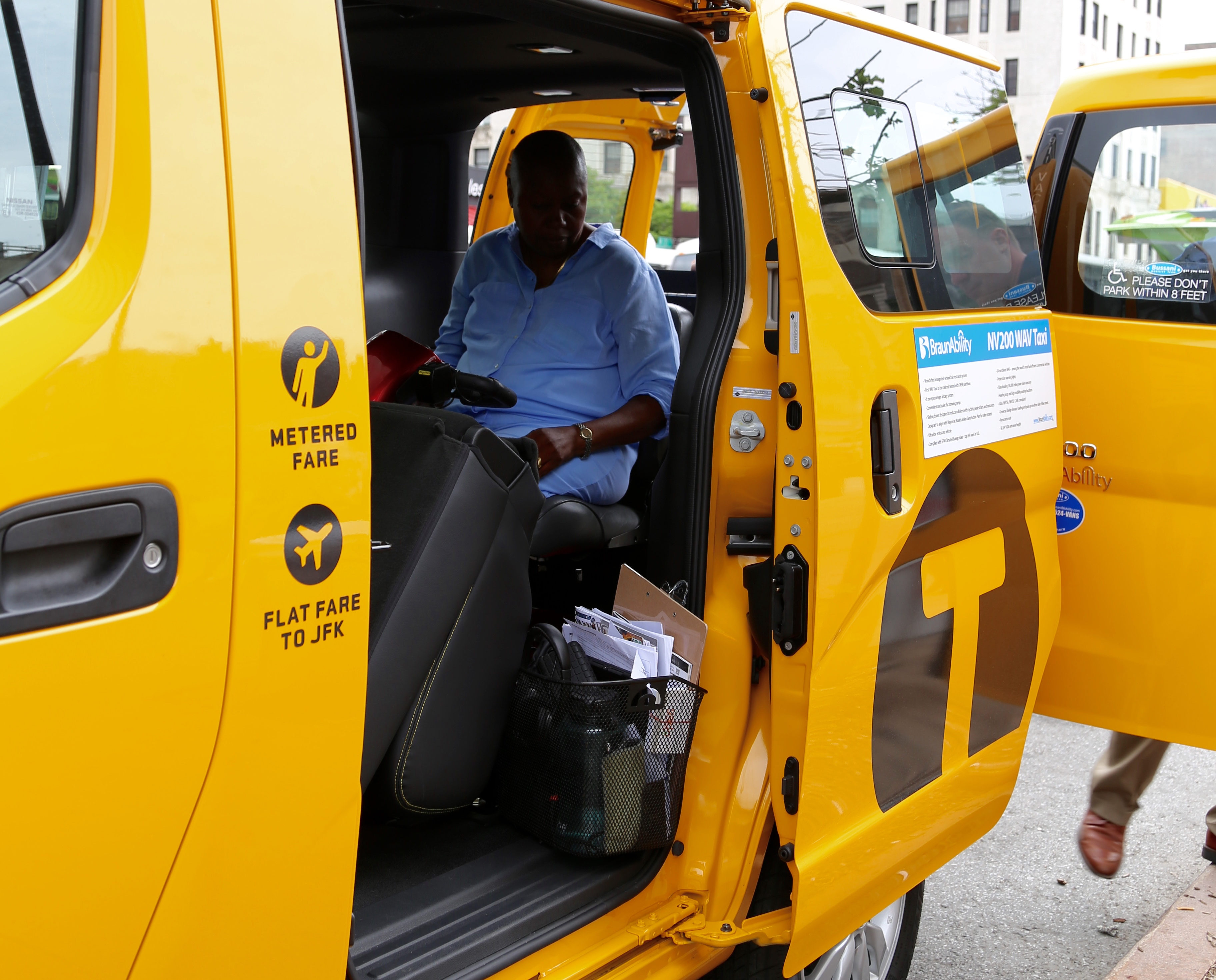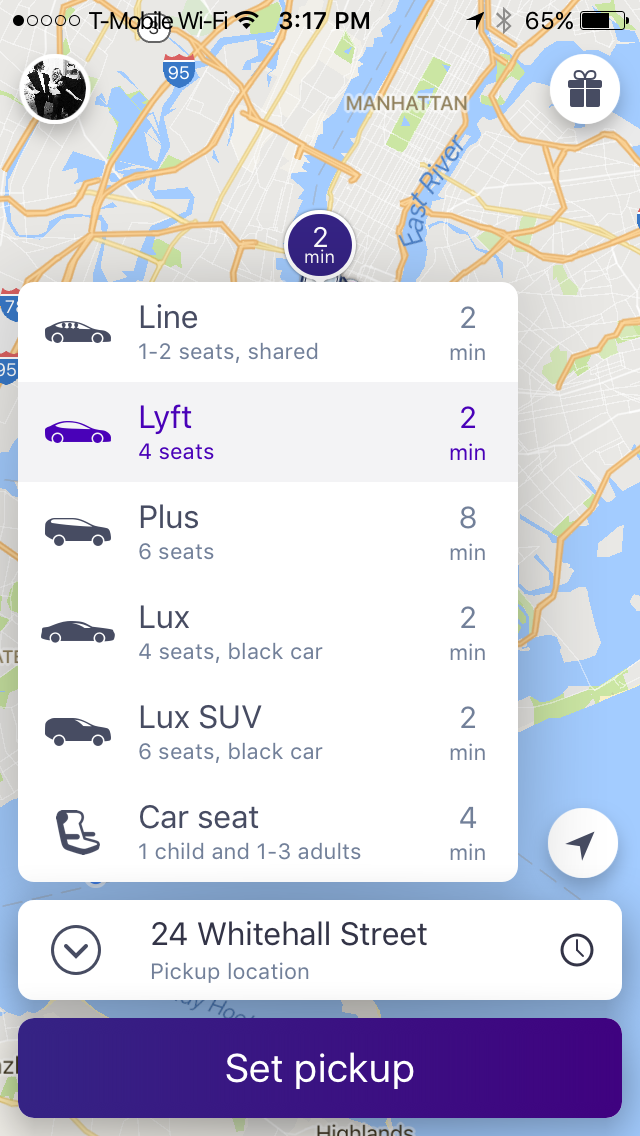
At the Taxi and Limousine Commission (TLC) hearing today, the de Blasio Administration will propose a rule to make New York City’s taxi industry — and its traditional car service counterparts — better serve the public.
New York City’s for-hire vehicle (FHV) industry is notoriously inaccessible for people who use wheelchairs. Wheelchair users, if they can get wheelchair accessible vehicle (WAVs) at all, are often subjected to wait times of 20 minutes or more. Given the infamous unreliability of the city’s subway elevators and Access-A-Ride paratransit service, the proposed rule would ensure that FHVs become a viable travel option for New Yorkers with mobility impairments.
The rule will require FHV “bases” – the business entities that dispatch rides to vehicles, whether it be by phone or app – to provide more wheelchair accessible vehicles across the city. Each FHV base would be required to dispatch a set percentage of its rides to WAVs, regardless of whether the rider needs one. This requirement would climb to 25% over the course of several years, giving the companies and drivers time to adjust.
This kind of trip threshold would go a long way in getting WAVs into regular circulation on the city’s streets, enabling them to accept wheelchair user trips as part of the normal course of business without excessive wait times. The rule’s focus on trips as opposed to vehicles is intended to keep WAVs from sitting around unused, as is the case currently with many of the wheelchair accessible green and yellow cabs.
Meanwhile, the actual number of FHV vehicles serving NYC’s streets continues to grow exponentially. Uber has more than two dozen bases dispatching to upwards of 62,000 vehicles in New York City alone, but less than a hundred of these are WAVs. The company also adds roughly 2,000 vehicles to its ranks per month, packing 2,000 opportunities to increase the accessibility of the service.
Lyft’s WAV offerings are no better than Uber’s. A recent check of the Lyft app offered a 2 minute wait time for a basic Lyft ride, and a 4 minute wait for a vehicle with a car seat, but zero options for a vehicle that can carry a wheelchair.

With so few WAVs circulating on the city’s streets, the few that do exist aren’t on hand to respond when they are specifically requested by wheelchair users, thus leading to denied trips or excessive wait times.
The TLC’s proposed rule has managed to do the unthinkable — uniting New York’s old-school black car companies with new-school TNCs, their erstwhile rivals, in opposition. According to the loose coalition that has formed around the issue, a trip mandate would have a “crushing impact,” hurting their bottom lines and forcing them to alter business models. They argue it will be difficult to inspire drivers to buy new vehicles, especially those who are locked into multi-year leases, or have just entered the market with a new vehicle.
However, what’s noteworthy about the TLC’s trip mandate is that it actually has the potential to make driving a WAV a lucrative investment for drivers. In the end, WAV drivers will have access to 100% of all dispatched trips, whereas non-WAVs will only have access to 75%. Any base will have the ability to dispatch to WAVs from any other base, thus limiting the number of WAVs each base must own. This arrangement incentivizes WAV leasing and ownership while providing bases with some flexibility.
The newly-united FHV group has come up with a counter plan that would create a centralized dispatch service for wheelchair users. The group claims this plan will guarantee average response times of 15 minutes across the city. In a city where response times are typically 3 or 4 minutes, this plan still falls far short of providing wheelchair users with equivalent service. It also obscures the very real possibility of extreme wait times for riders in lower density areas of the city.
In an equitable system, a wheelchair user should experience wait times equivalent to that of non-wheelchair users. The only way to ensure TNCs and traditional FHV bases provide truly equivalent service to is to hold their feet to the fire, and we’re pleased to see the TLC’s leadership on this issue.
 On the Brink: Will WMATA’s Progress Be Erased by 2024?
On the Brink: Will WMATA’s Progress Be Erased by 2024?
The experience of being a WMATA rider has substantially improved over the last 18 months, thanks to changes the agency has made like adding off-peak service and simplifying fares. Things are about to get even better with the launch of all-door boarding later this fall, overnight bus service on some lines starting in December, and an ambitious plan to redesign the Metrobus network. But all of this could go away by July 1, 2024.
Read More Built to Win: Riders Alliance Campaign Secures Funding for More Frequent Subway Service
Built to Win: Riders Alliance Campaign Secures Funding for More Frequent Subway Service
Thanks to Riders' Alliance successful #6MinuteService campaign, New York City subway riders will enjoy more frequent service on nights and weekends, starting this summer. In this post, we chronicle the group's winning strategies and tactics.
Read More